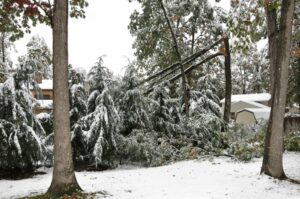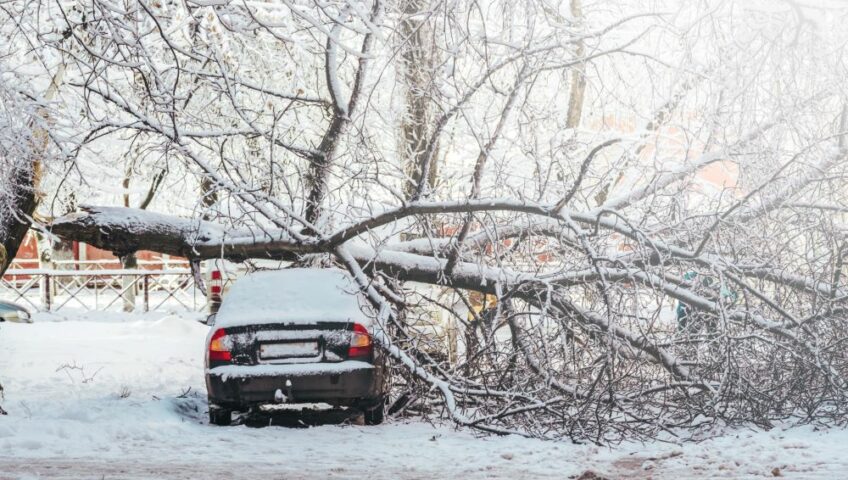Trees are not just aesthetic additions to your property; they provide shade, improve air quality, and contribute to the overall well-being of the environment. As majestic as they may be, trees can pose safety hazards, from falling branches to a total collapse.

If you have trees on your property in Minnesota, it’s essential to understand the potential risks and take proactive measures to ensure your trees do not pose a safety hazard to your family. Continue reading to learn more about how to assess and manage tree hazards on your property.
4 Common Tree Safety Hazards & How to Manage Them
- Falling Branches – Dead or weakened tree branches can fall unexpectedly, posing a significant risk to people, structures, and vehicles beneath. Keep an eye out for branches on your tree that appear to be without foliage, stripped of bark or have snapped and are hanging on by a thread. These branches could easily break off and fall during a windstorm. Before this happens, trim these hazardous branches off your tree or bring in a professional tree care company in Minnesota to do it for you.
- Cavities & Cracks – Cavities or cracks within the trunk of a tree can significantly weaken its structure, making it prone to collapse, especially during a violent storm or as a result of heavy snow accumulation. If you discover cracks or cavities in a large tree, you should seek assessment from a professional arborist in Minnesota. Your tree may be decaying from within, in which case it will most likely need to be felled and removed before it collapses on its own. Ask your arborist if there may be hope for saving the tree or if removal will be necessary.
- Unusual Leaning – A tree leaning at an unusual angle can be a red flag. While some trees naturally lean, a sudden change in posture may signify root damage or structural instability. Over time, this may cause the tree to collapse. Contact a professional arborist in Minnesota to assess the extent of the lean, determine if the leaning tree poses a safety hazard and, if so, explain what corrective measures are necessary. It may be possible to install support systems such as cables and braces that can help reinforce the tree’s structure. Otherwise, tree removal may be required.
- Disease or Pest Infestation – Sometimes, a tree may decline because it has been afflicted by pests or disease. Signs of a pest infestation or fungal disease can include leaves being discolored or dropping prematurely, abnormal growth, and peeling or cracking bark. Diseases and tree-boring insects can slowly kill a tree, causing branches to fall and eventually leaving the tree susceptible to collapse. Contact a local tree care company in Minnesota about measures that can be taken to save the tree. Unfortunately, trees that have declined too far will need to be removed before they pose a safety hazard.
The Twin Cities’ Best Tree Care & Removal Company
When you discover tree hazards on your property, your safest and smartest choice is always to call professional arborists who can help you mitigate the risks. Contact Pro-Tree today if you’d like to schedule a consultation with one of our arborists in the Twin Cities metro area!


Write a Comment